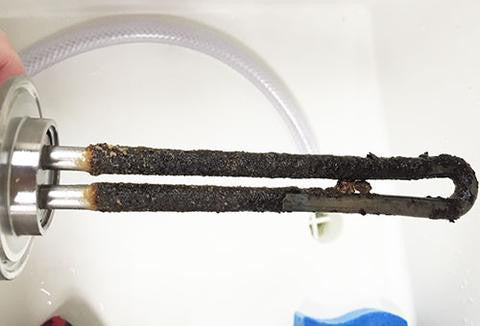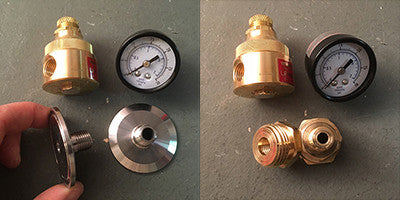Articles on brewing and opening a brewery

What Causes Fuses to Blow
Fuses blow when the draw (amps) is higher than the fuse is designed to permit. With the BREWHA brewing systems, this is typically caused by: 1. a short where the draw can...
What Causes Fuses to Blow
Fuses blow when the draw (amps) is higher than the fuse is designed to permit. With the BREWHA brewing systems, this is typically caused by: 1. a short where the draw can...

Best Way to Clean and Sanitize Brewing Equipment
One of the useful features of the BREWHA BIAC is that boiling can occur inside the fermenter which makes sanitation a snap—the heat of the boil will sanitize the fermenter so...
Best Way to Clean and Sanitize Brewing Equipment
One of the useful features of the BREWHA BIAC is that boiling can occur inside the fermenter which makes sanitation a snap—the heat of the boil will sanitize the fermenter so...

How to Effectively Clean Electric Heating Elements
Cleaning beer brewing elements is not difficult, especially with the BREWHA system where an element can be easily removed from the vessel simply be removing the clamp that holds it in place. Once...
How to Effectively Clean Electric Heating Elements
Cleaning beer brewing elements is not difficult, especially with the BREWHA system where an element can be easily removed from the vessel simply be removing the clamp that holds it in place. Once...

Securing Sanitary Clamps Against Accidental Loo...
A customer recently informed us that some friends (who were new to brewing) had loosened one of the sanitary clamps on the 'wrong' (that is, nearest to the fermenter) side of the valve....
Securing Sanitary Clamps Against Accidental Loo...
A customer recently informed us that some friends (who were new to brewing) had loosened one of the sanitary clamps on the 'wrong' (that is, nearest to the fermenter) side of the valve....

Preventing Scorched Wort and Burnt Flavor in Yo...
After four weeks of eager anticipation, there are few things more devastating to a brewer than discovering an unwanted microbial infection or tasting burnt/smokey notes in your latest brew. The BIAC...
Preventing Scorched Wort and Burnt Flavor in Yo...
After four weeks of eager anticipation, there are few things more devastating to a brewer than discovering an unwanted microbial infection or tasting burnt/smokey notes in your latest brew. The BIAC...

Assembling the Water Pressure Reducing Valve
Every hose and tank is designed with a maximum allowable working pressure (MAWP), which if exceeded, will cause damage and could even pose a safety hazard. The BREWHA tank jackets...
Assembling the Water Pressure Reducing Valve
Every hose and tank is designed with a maximum allowable working pressure (MAWP), which if exceeded, will cause damage and could even pose a safety hazard. The BREWHA tank jackets...

Improving Safety of Electric Water Heating Elem...
Breaker boxes (the electrical panel often found in laundry rooms) will prevent too much overdraw but a GFCI will respond much faster than a breaker to any deviation in...
Improving Safety of Electric Water Heating Elem...
Breaker boxes (the electrical panel often found in laundry rooms) will prevent too much overdraw but a GFCI will respond much faster than a breaker to any deviation in...

Preventing Deformation in Your Vessel
You need to read this article carefully, especially if you will be using municipal water in the jacket of your Jacketed Boil Kettle or 3-in-1 to chill wort after the boil,...
Preventing Deformation in Your Vessel
You need to read this article carefully, especially if you will be using municipal water in the jacket of your Jacketed Boil Kettle or 3-in-1 to chill wort after the boil,...

How to Avoid a Stuck Mash and Ruining the Heati...
Melting a heating element by dry-firing is not a pleasant experience, not to mention it could ruin a batch, so here are a few suggestions on how to avoid this...
How to Avoid a Stuck Mash and Ruining the Heati...
Melting a heating element by dry-firing is not a pleasant experience, not to mention it could ruin a batch, so here are a few suggestions on how to avoid this...

Operating the 240V/30amp Tabletop Brewing Power...
The 240V Brewing Power Controller (BPC) is designed to give safe and easy access to 240V/30amp power in the home. Without it, one would either have to use 120V power or...
Operating the 240V/30amp Tabletop Brewing Power...
The 240V Brewing Power Controller (BPC) is designed to give safe and easy access to 240V/30amp power in the home. Without it, one would either have to use 120V power or...